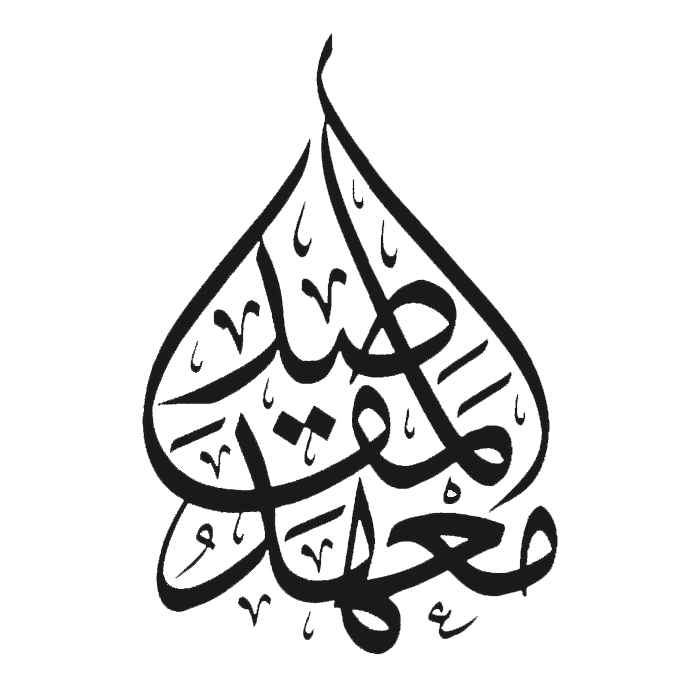by Dr. Ildus Rafikov
MI Vice President – Research
Islam is not merely a religion of personal piety and ritual; it constitutes a comprehensive way of life that has shaped civilizations across centuries and continents. Upon closer examination of the development of Islamic civilization, three key features emerge: purposefulness, connectivity, and wholism. These concepts are not merely abstract principles but were actively embodied in the governance, culture, science, and social systems that flourished under Islamic rule. From the early caliphates to the great empires of the Islamic Golden Age, these three features influenced the manner in which Muslims interacted with the world and constructed a distinctive civilization that continues to resonate in numerous modern societies.

This essay will examine how purposefulness, connectivity, and wholism were not only essential elements in the development of Islamic civilization but also offer insights for understanding and addressing complex global issues in the 21st century.
Purposefulness: Islam as a Civilizational Mission
A defining characteristic of Islamic civilization is its sense of purpose. Islam provides its adherents with a clear objective: to function as stewards of the Earth (khalīfah), establish justice, and adhere to divine will. This extends beyond individual worship to encompass a broader collective responsibility for constructing a just and ethical society. This purposefulness is rooted in the Qur’anic directive: “I did not create jinn and humans except to worship Me” (Qur’an, 51:56). In this context, worship is not confined to ritual acts but encompasses all activities that contribute to the welfare of individuals and communities, including governance, law, commerce, and environmental stewardship.
Historically, this sense of purposefulness served as the primary impetus for the early Muslims, particularly under the leadership of the caliphs, to expand and establish a just political and social order. The caliphate of Umar ibn Al-Khattab (R.A.) exemplifies this phenomenon. His rule was characterized by a commitment to justice and the welfare of all individuals, encompassing both Muslims and non-Muslims. The expansion of Islam during his reign was not driven solely by military conquest but by a vision of creating societies that were grounded in Islamic ethical principles. The establishment of institutions such as the Bayt al-Māl (public treasury) and the welfare system for the impoverished reflected this purposefulness. Umar’s governance represented a practical embodiment of the Islamic principle of ‘imāratu’l-arḍ—the mandate to care for and develop the Earth, ensuring that all individuals, regardless of faith, lived under a system of fairness and justice.
In a civilizational context, purposefulness gave Islamic societies a long-term vision, one that was not merely about territorial gains or economic domination but about creating a balanced, moral society. Islamic civilization saw itself as part of a broader divine mission: to build a world where justice, peace, and ethical values were at the forefront. This sense of purpose also played a key role in the flourishing of Islamic science, philosophy, and art. Scholars like Al-Farabi and Ibn Sina pursued knowledge not just for the sake of intellectual curiosity but because they believed that learning and scientific inquiry were acts of worship, contributing to the broader purpose of bettering society.
Connectivity: The Web of Relationships in Islamic Civilization
The second defining feature of Islamic civilization is connectivity. Islam is a faith that emphasizes the interconnectedness of all aspects of life—between people, between societies, and even between the natural and spiritual worlds. This is deeply rooted in the Islamic understanding of tawhid (the oneness of God). Just as God is One, so too is His creation interwoven with deep connections. The Qur’an frequently speaks about the interconnectedness of all things: “Do they not see that We have created everything in pairs, so that they may reflect?” (Qur’an, 51:49). This notion of connectivity can be seen in the way Islamic civilization built networks of knowledge, trade, and governance across vast geographies.
One of the best examples of connectivity in Islamic history is the Islamic Golden Age, particularly during the Abbasid Caliphate, when Baghdad became the intellectual hub of the world. Here, scholars from diverse backgrounds—Muslims, Christians, Jews, Persians, Greeks—came together in places like the famous Bayt al-Hikmah (House of Wisdom) to translate and build upon the knowledge of previous civilizations. This intellectual exchange wasn’t limited by religion or nationality; it was driven by the understanding that knowledge is a universal good, interconnected across cultures and eras. Connectivity wasn’t just intellectual but also practical. The trade routes of the Islamic world stretched from Spain to China, and Islamic cities became bustling centers where goods, ideas, and technologies flowed freely.
Connectivity also played a crucial role in how Islamic civilization approached governance. Under the rule of Umar ibn Al-Khattab (R.A.) and his successors, the Muslim caliphate expanded rapidly, and one of the reasons for its success was its ability to connect different peoples, tribes, and cultures under a single political system while allowing for local autonomy. For example, when the Muslims entered Jerusalem in 637 CE, Umar famously negotiated peaceful terms with the Christian community, allowing them to maintain control of their holy sites. This respect for diversity and the fostering of connections between different religious and ethnic communities was a hallmark of Islamic governance.
The underlying principle here is that Islamic civilization, from its earliest days, has thrived on creating connections—across geographical boundaries, intellectual fields, and social divides. These connections were not seen as mere tools for expansion or control but as a reflection of the Qur’anic vision of a united and interrelated creation.
Wholism: The Integrated Nature of Islamic Civilization
Wholism is the third feature that characterizes Islamic civilization. Wholism in Islam is rooted in the idea that all aspects of life are interconnected and that nothing exists in isolation. The universe is seen as a coherent whole, where every element has its place in the broader cosmic order established by God. Islamic civilization, therefore, approached life in a holistic way, integrating the spiritual, intellectual, and material dimensions of life.
In the early centuries of Islam, this wholistic approach was reflected in the development of knowledge and sciences. Scholars didn’t draw sharp boundaries between different fields of study the way modern academia often does. Instead, they saw philosophy, medicine, law, and theology as interconnected disciplines. For instance, Ibn Sina (Avicenna), one of the most influential thinkers of the Islamic Golden Age, was not only a physician but also a philosopher and theologian. He wrote extensively on the relationship between the soul and the body, the nature of knowledge, and the importance of ethical living, all of which were part of a unified, wholistic vision of human existence. His contributions to medicine were not seen as separate from his spiritual and philosophical work but as part of a single mission to understand and improve human life.
In governance, this wholism translated into the integration of religion and politics, law and ethics. Islamic law (Shari’ah) was not just a legal system in the narrow sense; it was a comprehensive framework that governed all aspects of life, from personal morality to trade regulations and governance. Under Umar ibn Al-Khattab, for example, governance was not just about ruling over people but about creating a balanced society where everyone, Muslim and non-Muslim alike, had their rights protected. The welfare system established by Umar, where non-Muslims were included in state welfare programs, is an example of this wholistic approach to governance.
Even Islamic art and architecture reflect this wholism. Islamic art, with its intricate geometric patterns, calligraphy, and emphasis on unity in diversity, embodies the idea that beauty, spirituality, and functionality are intertwined. The architecture of mosques, madrasas (schools), and even cities like Baghdad and Cordoba was designed to reflect a unified vision of society where the sacred and the everyday were seamlessly connected.
Conclusion: Lessons for Today
The principles of purposefulness, connectivity, and wholism that defined Islamic civilization offer valuable lessons for our modern world. In an era marked by fragmentation—whether in politics, knowledge, or social systems—Islamic civilization’s integrated approach to life reminds us of the importance of having a clear sense of purpose, of developing connections across (often artificial) divisions, and of seeing life as an interconnected whole.
Purposefulness in governance and society can inspire leaders today to think beyond short-term gains and focus on long-term justice and ethical development. The connectivity that underpinned Islamic civilization reminds us of the importance of building bridges across cultures, religions, and nations, especially in a world that often seems divided. And wholism offers a model for integrating different aspects of life—intellectual, spiritual, and material—into a coherent and balanced whole.
Islamic civilization’s remarkable success was not just about military conquests or economic prosperity; it was about building a world that reflected the divine principles of justice, unity, and interconnectedness. These principles remain as relevant today as they were centuries ago, offering a roadmap for creating a more just and harmonious world.

